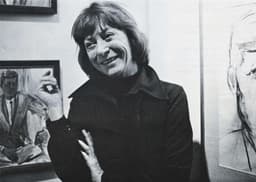
Elaine de Kooning
@elaine-de-kooning
Elaine de Kooning: Pioneer of Abstract Expressionism
Elaine de Kooning was born in 1918 in Brooklyn, New York, and became one of the most influential abstract expressionists of the twentieth century, though she often remained overshadowed by her famous husband, Willem de Kooning. Before their marriage in 1943, Elaine had already established herself as a talented artist in her own right, studying at Hunter College and becoming deeply engaged with the vibrant New York art scene. She passed away in 1989, leaving behind a remarkable body of work that challenged conventions and expanded the possibilities of abstract art.
De Kooning's artistic style was characterized by gestural abstraction and dynamic brushwork, though she uniquely balanced abstraction with figuration. Her work often featured energetic, sweeping lines and bold colors that conveyed movement and emotion rather than literal representation. While many abstract expressionists focused exclusively on pure abstraction, Elaine maintained an interest in the human figure, frequently returning to themes of the body, particularly exploring female forms and the concept of femininity in modern art.
Throughout her career, she produced significant works including her celebrated "Bullfighter" and "Jardin du Luxembourg" series, which demonstrated her mastery of composition and her innovative use of space. She was not merely a studio artist; she was also a prolific writer about art, critic, and passionate educator who taught at numerous institutions, influencing generations of young artists.
De Kooning's legacy extends far beyond her paintings. She challenged gender barriers in the male-dominated abstract expressionist movement and insisted on maintaining her own artistic identity despite being married to another master painter. Today, art historians increasingly recognize her essential contributions to modern art, celebrating her as a trailblazer whose work continues to inspire contemporary artists exploring the intersection of abstraction and figuration.